Case Study: Fixing A Mixed Bowling Action
.jpeg) "Mixed" bowling actions are a common cause for concern in fast bowlers. Using this case study subject as an example, you can learn about dealing with a mixed bowling action.
"Mixed" bowling actions are a common cause for concern in fast bowlers. Using this case study subject as an example, you can learn about dealing with a mixed bowling action.
Chances are if you are reading this article you know what a mixed action is. However, just to be clear, we are talking about a bowling technique that mixes the side on and front on bowling actions. When this happens, the spine twists and injury chances increase.
For many years, coaches have been taught a mixed action is a fate worse than death. It must never be coached and it must always be corrected if seen in a player. Recently, we have seen that it's not always bad in all bowlers. The status of mixed actions has been reduced from "destroy at all costs" to "watch for issues". It's still bad, but it's no longer high treason.
Here's how I helped one of our bowlers with a mixed action over 10 weeks in our case study: Identification, drills, and compromises.
Subject H: Fast bowler
"H" is a club fast bowler new to the team in his late 20's. He bowls at a good club pace, moving the ball off the seam and relying on great accuracy and stamina. His reputation as a "bowling machine" is well founded. He opened the bowling or came on first change for the 1st XI throughout his first season.
However, during the season a couple of issues presented,
- When he lost accuracy he tended to over pitch.
- He would occasionally knock his bowling hand against his hip, causing a loss of accuracy or even having to pull out of the delivery.
- He was warned by the umpire in several games for running on the danger area.
His goals for the session was to find out the reason for these issue and make any technical changes needed to improve his accuracy. He was not concerned with his pace, but would be happy if he could add something as long as he didn't lose accuracy.
As you can see, by this point we had not established a mixed action. All we had were his results from the summer and the problems he identified.
Analysis
The first step was to work out what was happening. To do this, we spent the first session of the off season looking at his bowling, observing and analysing.
The results were:
- Balls: 14
- Speed: 66.79mph (107.49kph)
- Accuracy: 35.7%
(Click to enlarge)
This set a benchmark for him on PitchVision, didn't tell us much without the video of his action. It's here we spotted the most likely cause of his woes, his mixed action.
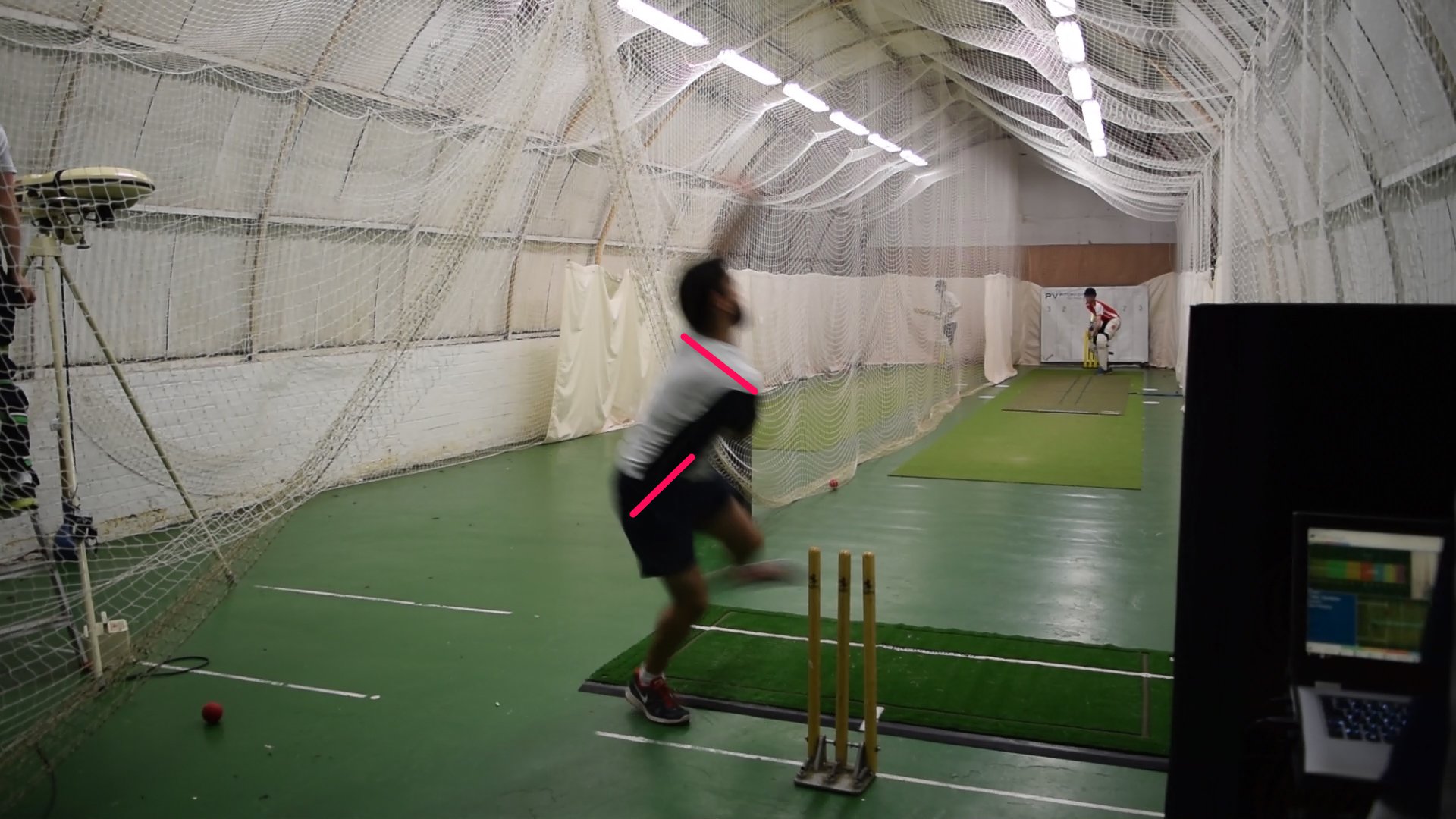
As you can see from the still taken at back foot landing, his legs were in a side on position but his body was front on. The likelihood of hitting his leg with his bowling hand was high, and he did it a couple of times in the session.
We also saw he had an incomplete follow-through. This was the reason he was warned by the umpire. His follow-through step was so truncated he often ran straight in front of the umpire. This must have cost him a few LBW appeals as well.
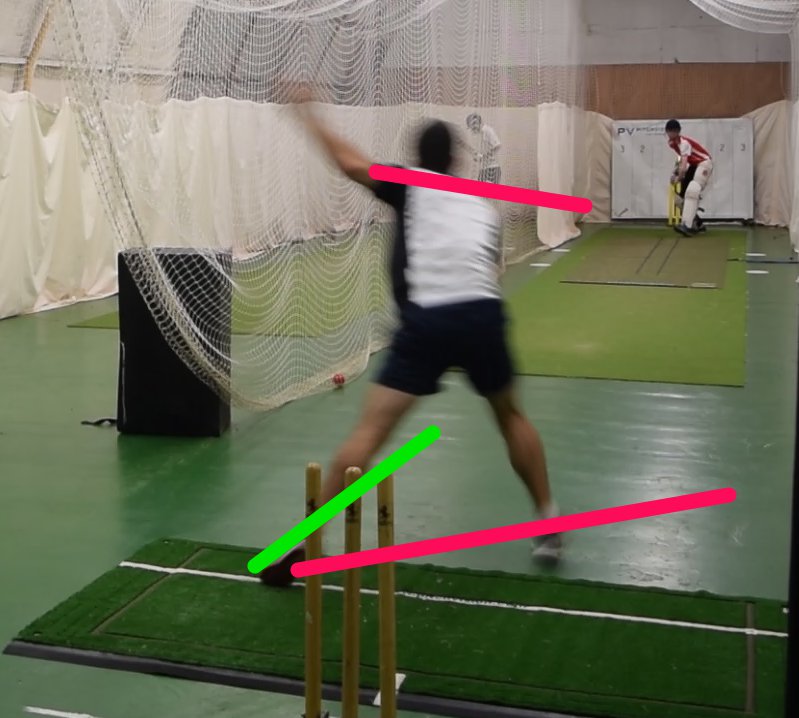
I had a theory there was a link between these elements. In his efforts to bowl accurately he was subconsciously reigning in his movements. By being front on and barely following through, he reduced the movement his body had to go through, giving him a feeling of control. In fact, the opposite was happening as he lost his natural length when changing his action.
So, we concluded, our job was to work together to get it back to a side on action, bringing more control and pace at the same time.
Programme
"H" followed the same basic program to "A": Tent peg drills, target bowling and bowling at a batsman. The main difference was that he was trying to line up better at back foot contact (TP1) and front foot contact (TP2) then complete TP4. "A" was more about TP2 and 3. However, the great thing about Tent Peg drills is that you can focus on specific parts of the action, depending on your needs.
"H" split his time with batting much less than "A" meaning he could do more drill and target bowling work. He was diligent with his drills, working towards bringing his shoulder into a side on position at front foot contact, and completing his follow through by focusing on bowling "through" rather than "at" the target.
(A side note, I like this coaching cue with quicker bowlers who are trying to put the ball on the spot rather than bowl at pace. I ask them to image the ball destroying the stumps or hitting the keeper's gloves hard. This is so they can image the ball traveling at pace and bouncing on the way through to somewhere else, rather than trying to carefully drop it in a specific spot. It works well as a cue.)
The biggest challenge for "H" was his muscle memory. As he is one of the older players in the group, he has bowled the most balls. I suspect well over 10,000 in his career. His action is beyond established, it's rock solid. To make these changes was extremely hard because the pattern is so ingrained.
Results
So after 10 weeks we saw some changes.
Technically, he removed most of his mixed action by drawing his shoulder back further, and delaying it a a little to let his hip go through first, as you can see here:
It looks like a small change, but with so much experience in his old action to overcome, this minor difference was a huge breakthrough that took several hours of drills to slowly draw out.
He has not hit his hip since.
His follow through is less of a success but still a big difference. As you can see here, when he focuses on completing his action (bowling through not at) he gets it right:
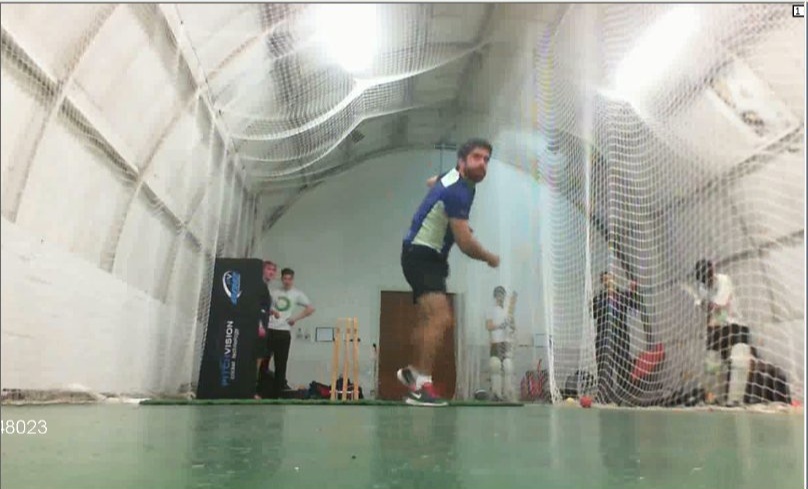
This area does still need work because he tends to slip back to landing in front of the stumps when he forgets to do it. The good news, is we know he can do it.
What difference did this make to his outcomes?
This is harder to say because he really only made a significant breakthrough in the last couple of weeks, and even then it is still not fully locked into his muscle memory (he is still not getting the follow through 100%).
Nevertheless, what's been most impressive is his consistency. Despite making noticable technical changes, he has lost no pace or accuracy at all.
Here are his stats for the last seven sessions:
- Balls: 139
- Pace: 66.70mph
- Accuracy: 41% (up by 5%)
(Click to enlarge)
This consistency is rare when tweaking actions. There is usually a period of chaos. As he has adapted so well, he can go into preseason confident that he can continue to work on technique and not fall apart in the basics of line and length.
Interestingly, he bowled 20% of balls at half volley length in this period. This compares to a team seamer average over the same period of 35%. It also compares to his own average before winter training of 22.7%. There is not a significant improvement, but I feel it is still early days to judge while still bowling indoors.
Next steps
Now we are entering preseason, the technical elements can be given a back seat to improving accuracy at his current pace, his main strength. We want that to become a super strength.
However, he can still work on his tent peg drills and when bowling through in warm ups, he can focus on both his arm pull and his follow through, knowing now that both are within his ability. He is is a strong position thanks to so much hard work in the winter.
- Login to post comments

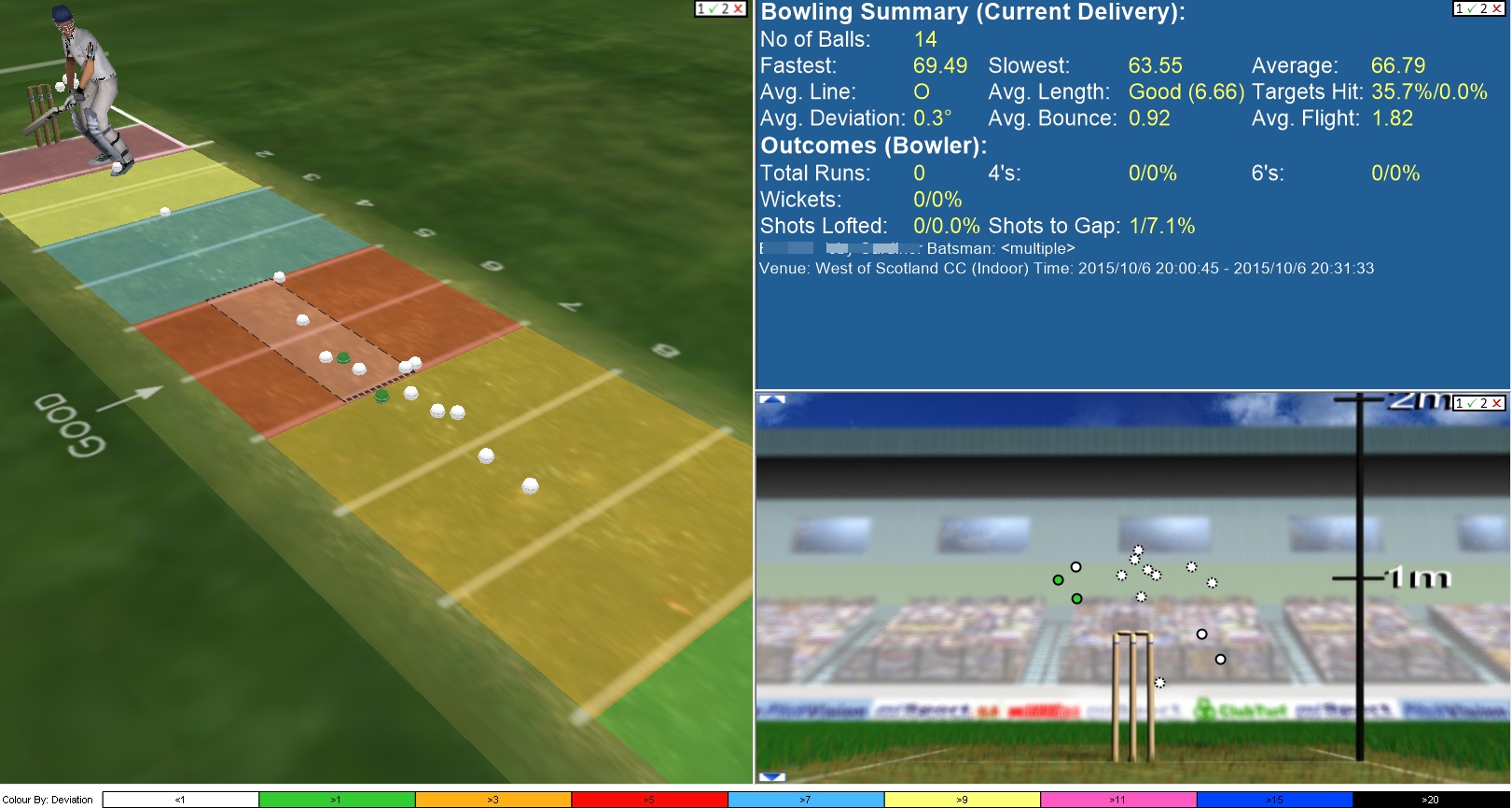
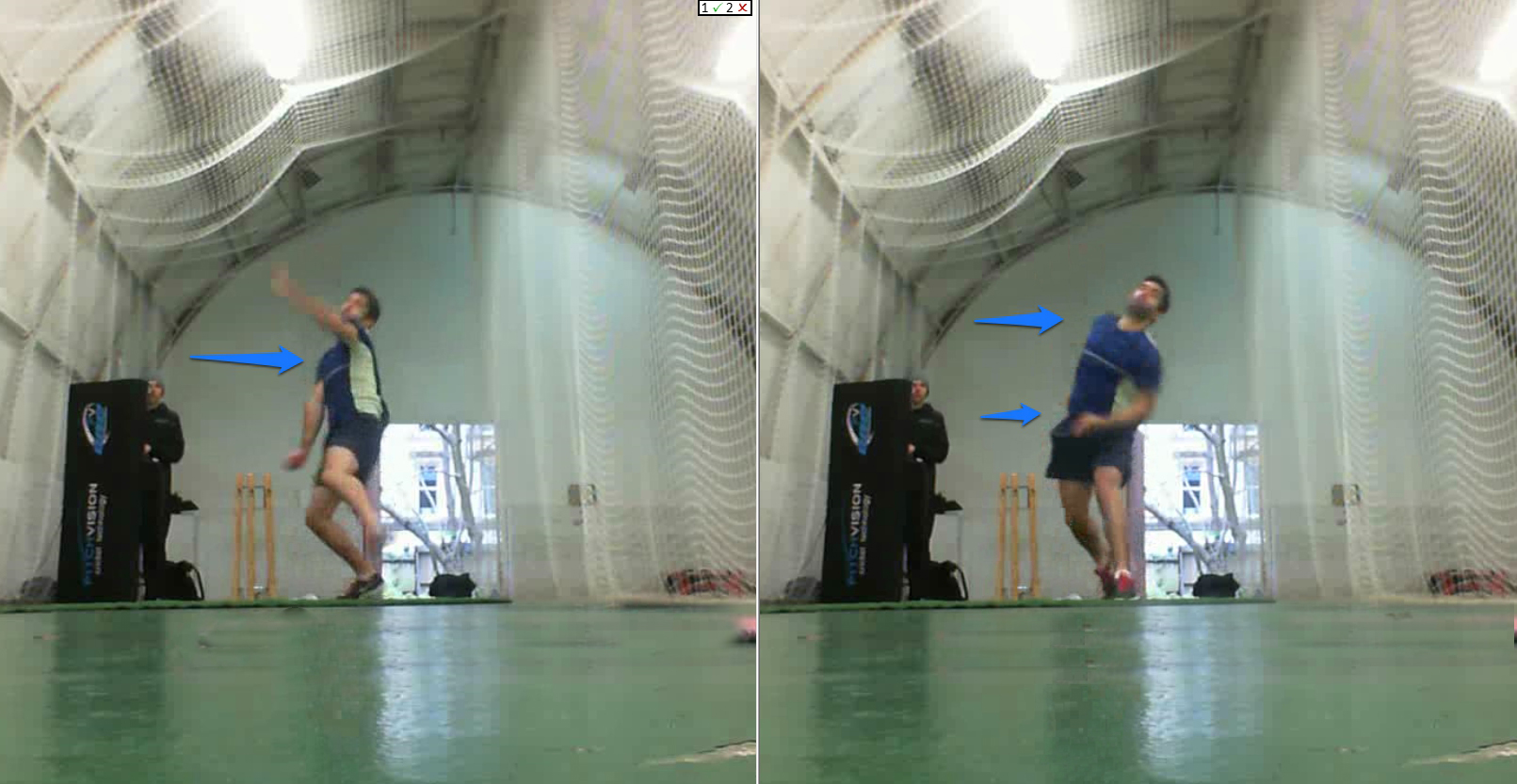
.jpg)
